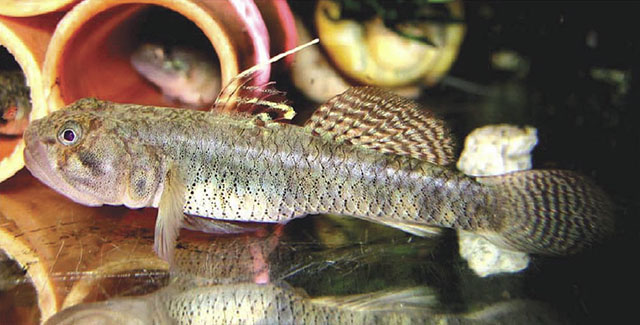| Gobiidae (Gobies), subfamily: Gobionellinae |
| 6 cm TL (male/unsexed) |
|
demersal; freshwater; brackish |
| Asia: India, Thailand, Cambodia, Malaysia, Brunei, Singapore, Indonesia. Indonesia. |
|
Dorsal spines (total): 6-7; Dorsal soft rays (total): 6-8; Anal spines: 1-1; Anal soft rays: 5-7; Vertebrae: 10-17. Distinguished by the following characteristics: moderately slender Pseudogobiopsis with second dorsal rays I,6-8; anal rays I,5-7; pectoral rays 16-19; longitudinal scales 22-25; TRB 6-8; predorsal scales 6-10, large, reaching up to close behind eyes; head flattened and jaws greatly enlarged in males; prsence of preopercular pores, posterior portion of oculoscapular canal present, including TLCP pore; scales on body mostly ctenoid; first spine of dorsal fin longest and usually filamentous in males, second or third spine longest in females, not elongate; upper half of body with scale margins narrowly outlined with dark pigment, five elongate dark blotches along midside of body with fine dark spots below and three dark streaks on face (Ref. 80545). |
| Occur along the bottom in brackish water of estuaries upstream to the freshwater tidal zone of rivers. Feeds on small fishes and invertebrates (Ref. 12693). |
|
Least Concern (LC); Date assessed: 29 December 2018 Ref. (130435)
|
| harmless |
Source and more info: www.fishbase.org. For personal, classroom, and other internal use only. Not for publication.
